5 Surprising Places to Find Soul-Stirring Stories
Stories are all around us. Sometimes, the best ones are in the most unexpected places.
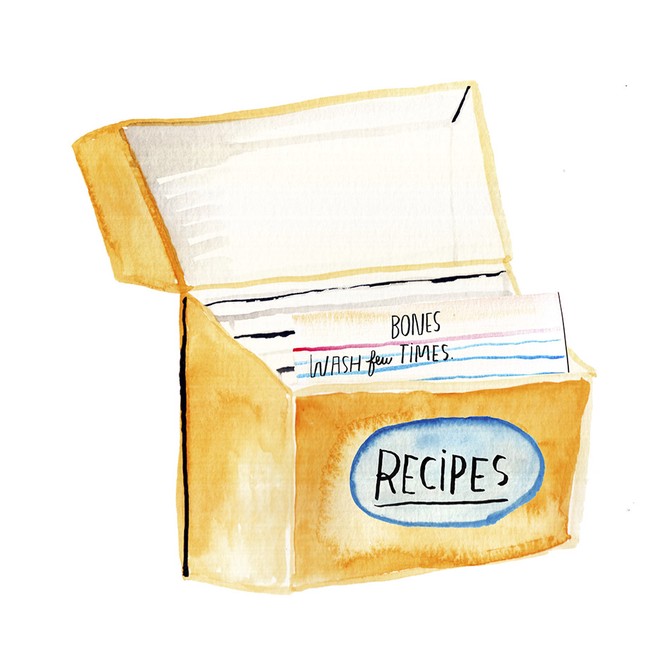
Illustration: Kate Bingaman-Burt
Love, Loss and What We Ate
My grandmother is baking in our kitchen. I'm 8 years old and standing next to her, mesmerized as she kneads challah dough to just the right texture—not too wet, not too tough. She smells like flour and wears her thin gray hair pulled back into a neat bun, her hairpins still showing through. She painstakingly rolls out rugelach to a perfect eighth-inch thickness, then fills it with nuts and jam and pinches the dough back onto itself. She hands me the scraps to make a cookie of my own.
My grandmother cooked by feel and taste, wrote recipes down only when asked. And so the few that survive more than 30 years later—the hamantaschen she made for Purim, the blintzes and sweet noodle kugel we had on the high holidays—are precious. When I was a child, these recipes, along with dozens more my mother collected, lived in plastic cases or stuck between pages of cookbooks. I forgot about them until my mother died. But as I went through her things, I set aside every card and clipping from her and her mother, though I'm not a cook. They belonged to my family, my childhood; I knew I couldn't leave them behind. And as I leafed through the stained and worn cards, I was transported. My grandmother's matzo ball soup, its recipe card yellowed and creased, was a Friday tradition when she visited, even on sticky summer nights when I grumbled that the temperature outside was as hot as the soup. My mother's careful ballpoint script returns me to the local library, where she would studiously copy recipes from the latest issue of Gourmet: Moroccan chicken with olives, curried lamb, watercress vichyssoise.
I'll never make most of these dishes, but I don't need to. The recipes are enough. Each one tells the story of how these women fed the people they loved—and reminds me that I was among them.
—By Naomi Barr
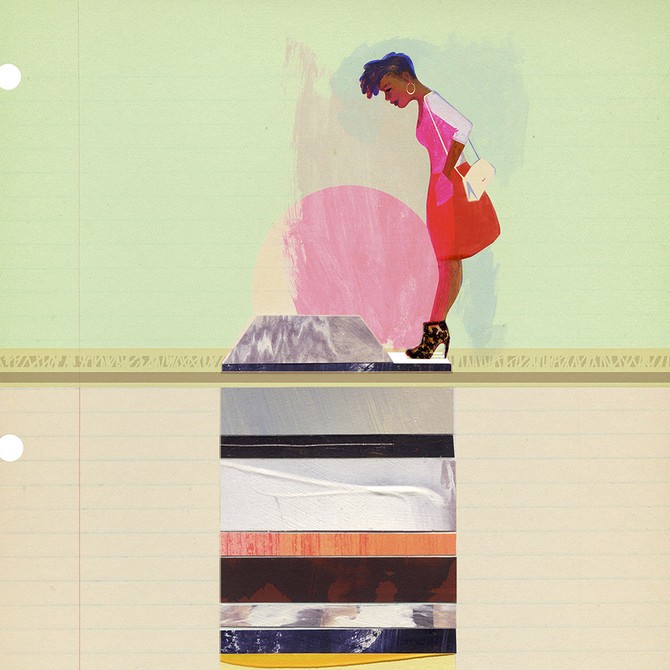
Illustration: Julia Breckenreid
On This Very Spot
At some point in time—June 1952, or the Paleozoic era, or six weeks ago—something happened on the patch of planet you're currently occupying. In 1888, in the building before the building before the building you're in now, maybe a man proposed to his beloved in the very spot where you're sitting; and perhaps 458 years before that, when there was no building at all, a teenage girl watched a shooting star; and 150 million years earlier, maybe a stegosaurus egg hatched in just that place and a scaly little guy greeted the world. Every chunk of dirt on earth has been the setting of more stories than we can fathom, most of them long forgotten.
But some people refuse to forget. Some people commemorate the events they find important, even if they're important only to them. Thank goodness some posterity-minded soul put plaque to stone in Makanda, Illinois, where in 1859, Boomer the Three-Legged Hero Dog perished while reportedly attempting to extinguish a fire with his pee. Praise be to the citizens of Sylacauga, Alabama, who erected a statue in appreciation of the eight-and-a-half-pound meteorite that bulleted through Ann Hodges's roof in November 1954 and smacked her on the hip. And what if no one had marked the Quartzsite, Arizona, tomb of Mr. Hi Jolly, who was hired by the U.S. government to test the military utility of camels? Many years ago, someone was pained to think we might forget these things. Many years ago, someone took the trouble to ensure we wouldn't.
In doing so, that someone put a story in your path, offered it to you as a gift. So when you happen upon a site marker, a plaque, a statue, a monument, or a memorial, stop and look. Do it to remember that every strange, singular life—every brave dog and comet-slapped homeowner and intrepid camel tester—is but one grain of sand on a beach the size of infinity. How kind it is, how generous, how stirring, to give a grain its moment in the sun.
—By Katie Arnold-Ratliff
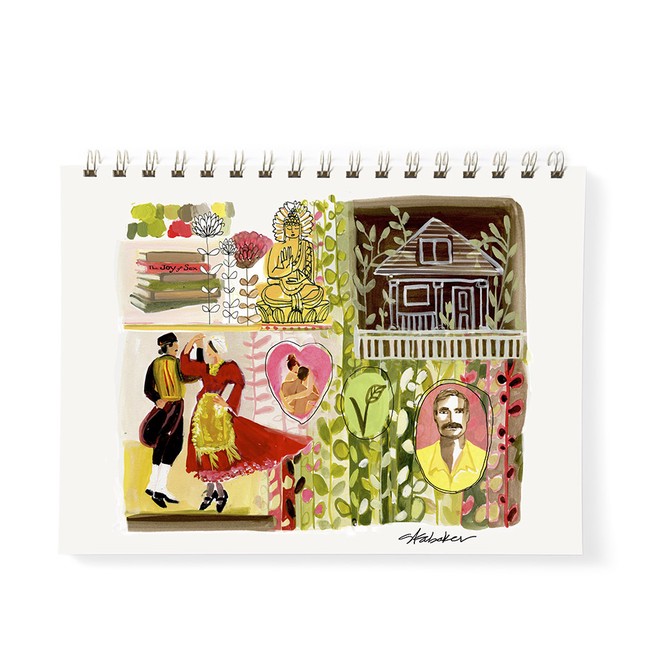
Illustration: Gayle Kabaker
The Small Stuff
I entered the abandoned house of the late Don Fletcher with a great sense of pity. Don (a pseudonym, by the way) had died of cancer in his mid-60s without leaving any children. The place had sat empty for several years by the time my friend Laura moved in next door. She said his junk was still there, rotting.
Some of the pity was for myself: Like Don, I had no heirs, and I had no heirlooms. Occasionally I worried that after I died, strangers would behold my beloved but inconsequential possessions—cheery melamine plates, little vases of sea glass—and decide I'd led an inconsequential life.
But Don's house, despite its primordial ooze of trailing vines and sodden carpet, was no sad-sack mausoleum. As I poked around, I discovered it was the Museum of Don Fletcher. According to his bookshelves, Don had been a seeker: The Bhagavad Gita, The Road Less Traveled, Cosmos. A stack of fliers told me he'd taught Greek folk dancing. He'd been a lover of vegetarian cooking; also a lover, given his modest collection of earthy '70s sex manuals. And tapedto his desk was a diagram illustrating where taste receptors live on the tongue: bitter, sour, salty, sweet. Was it some kind of handy reference, or had it just delighted him?
I love you, Don Fletcher, I thought. I bet you had a moustache. If only we could have broken plates together, Greek-style. No exquisite heirloom could have made me feel that way. An heirloom is a synecdoche, one small thing meant to memorialize us when we're gone. But Don's collection of worthless objects told the story of a whole life—not bitter and sour, but salty and sweet—and left a stranger sorry she would never know him. I hope my stuff will do the same. I can't imagine anything closer to immortality.
—By Amy Maclin
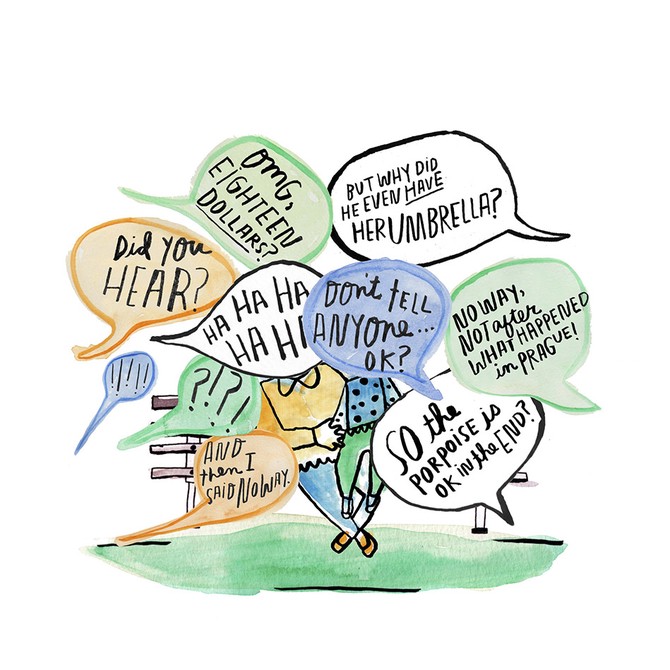
Illustration: Kate Bingaman-Burt
Now They're Talking!
One autumn day in north London 13 years ago, I found myself standing in a video store, gripping a wooden display case with one hand, the other hand clapped over my mouth, shocked and delighted to be privy to a stranger's graphic account of a mutually satisfying sexual encounter: forensic in its details, plum-guts-purple in its prose. I didn't have to try very hard to hear her phone conversation. This lady—and you'd have never guessed what an acrobatic being lurked beneath her peacoat and spearmint scarf; the encounter she described was positively yogic in its variety of positions—had pitched her voice at a volume that said, Listen if you will. I have nothing to hide. Or maybe it was saying something simpler: It's 2002, and none of us have figured out public mobile-phone etiquette yet.
The cell-phone Wild West of the early aughts was a peak era for overheard conversation. Now that we've transitioned from yapping to tapping, there are fewer opportunities to eavesdrop—but that only makes for a more refined and rewarding art. At its best, eavesdropping feels like reading a fragmentary but delicious novel: The narrative meets you most of the way, but it's up to you and your imagination to fill in shades of context, foreshadowing, tantalizing dropped beats here and there. This morning my baby daughter and I went to Union Square Park in Manhattan. On the bench to our left, a male-female couple squabbled amiably about her addiction to Instagram; to our right, two teenage girls debated names for Kim and Kanye's second kid. My daughter began to squirm off my lap to inspect the structural integrity of our bench, babbling, and I babbled back, happy to join the chorus of stories wafting and streaming all around us.
—By Jessica Winter
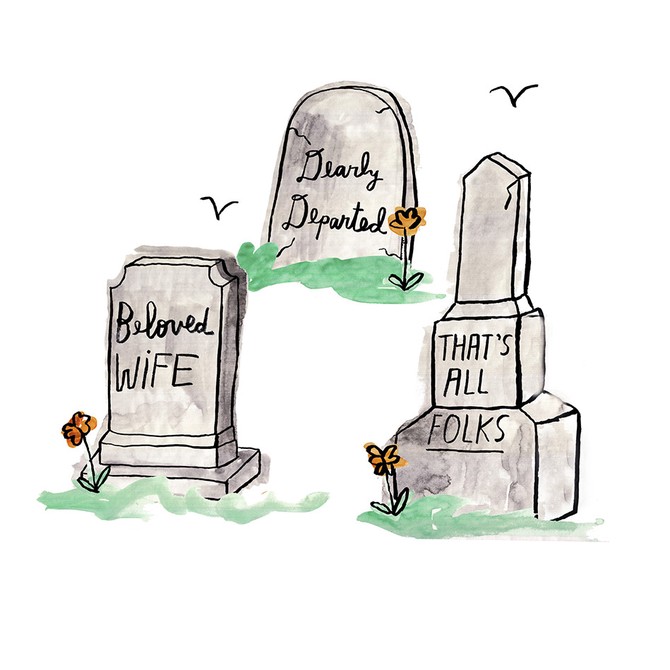
Illustration: Kate Bingaman-Burt
Written in Stone
Here in this cemetery near Lancaster, Pennsylvania, I'm crafting an epic. I'm starting with footnotes, the clues at my disposal: the graves. These dates (born, married, died) and designations (daughter of, wife of, mother of) are the bones of a narrative. So I'm weaving, spinning, flat-out making up.
I don't know the Shanabrooks, a mother and daughter who share the first name Violet. But they were a helluva twosome, I'm sure. When Big Violet went to the Amish market on Saturday, Little Violet followed in lace-up black shoes. Big Violet taught Little Violet how to say her prayers. In 1972, when Big Violet died, Little Violet said those prayers at her mother's bedside.
The Violets are unique; most of the shared plots belong to spouses. Henry and Lillian Dotterer both were born in 1906. Oh, wait—maybe they were twins. Maybe Lillian was Henry's never-married sister who eschewed the word spinster and joked that Henry was the only man she could tolerate. Henry and Lillian died in 1972 and 1971: He survived only a year without her.
And then there's Ethel Gerlach, married to John F. Gerlach. If Ethel were here, I'd be all, "Tell me, was he as handsome as the other John F.?" Ethel would go, "The president had nothing on my husband." In 1939, Ethel had her first child, Bobby. It's the Bobby Gerlachs of the world who make cemetery math a wrenching proposition: His stone reads 1939–1948 and is engraved with the phrase STEP SOFTLY, A DREAM LIES BURIED HERE. In 1950, Ethel had Connie Lou. 1950–1950, Connie Lou's stone reads. And then: BUDDED ON EARTH TO BLOOM IN HEAVEN.
A grave like the Gerlachs' is a sweeping tale; it's Roots and Gone with the Wind. But this isn't fiction. These were real people, people who lived. Lived, loved, hoped. Tried, failed, healed. Were born, married, and died.
—By Penny Wren
From the September 2015 issue of O, The Oprah Magazine

